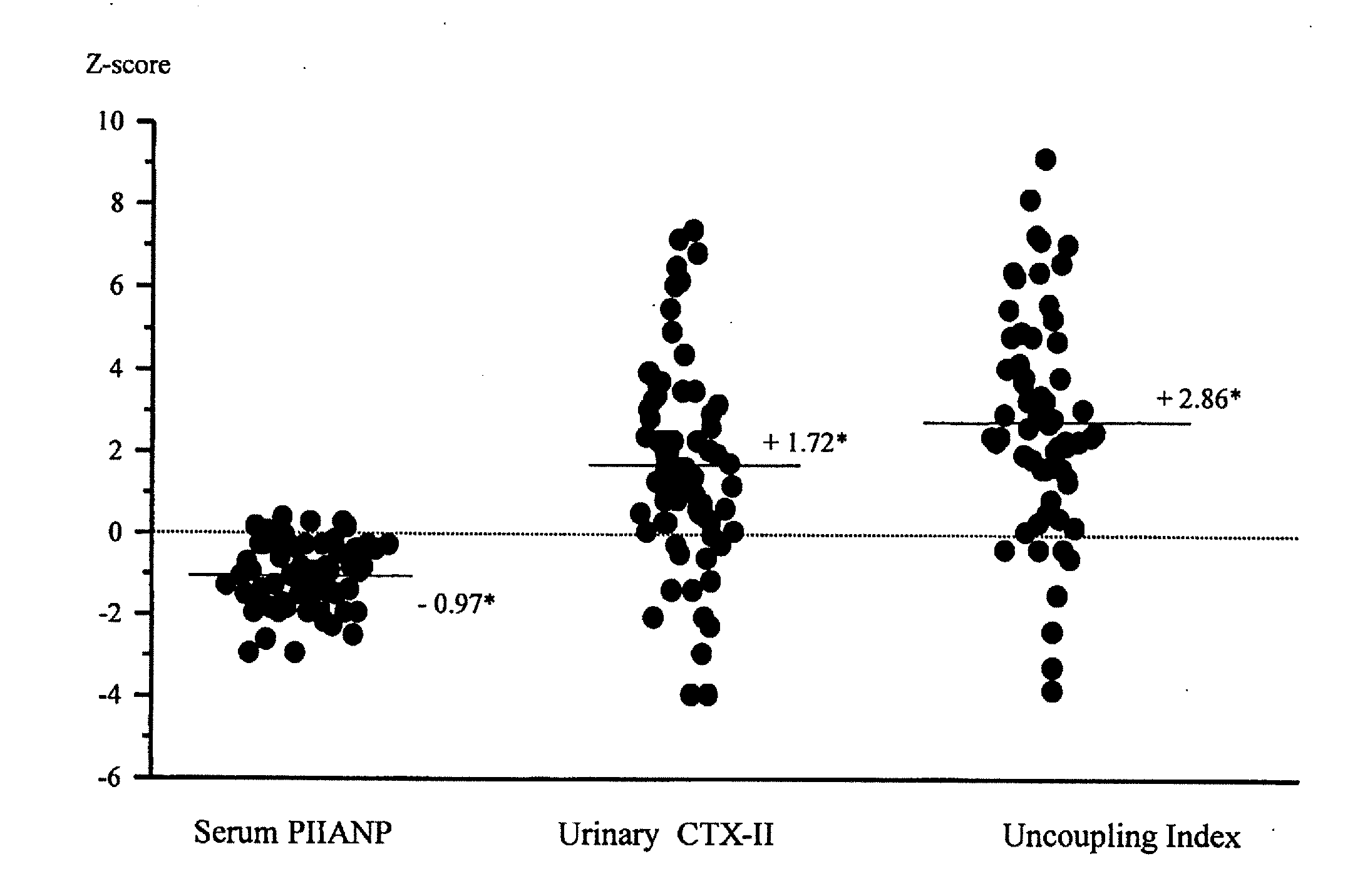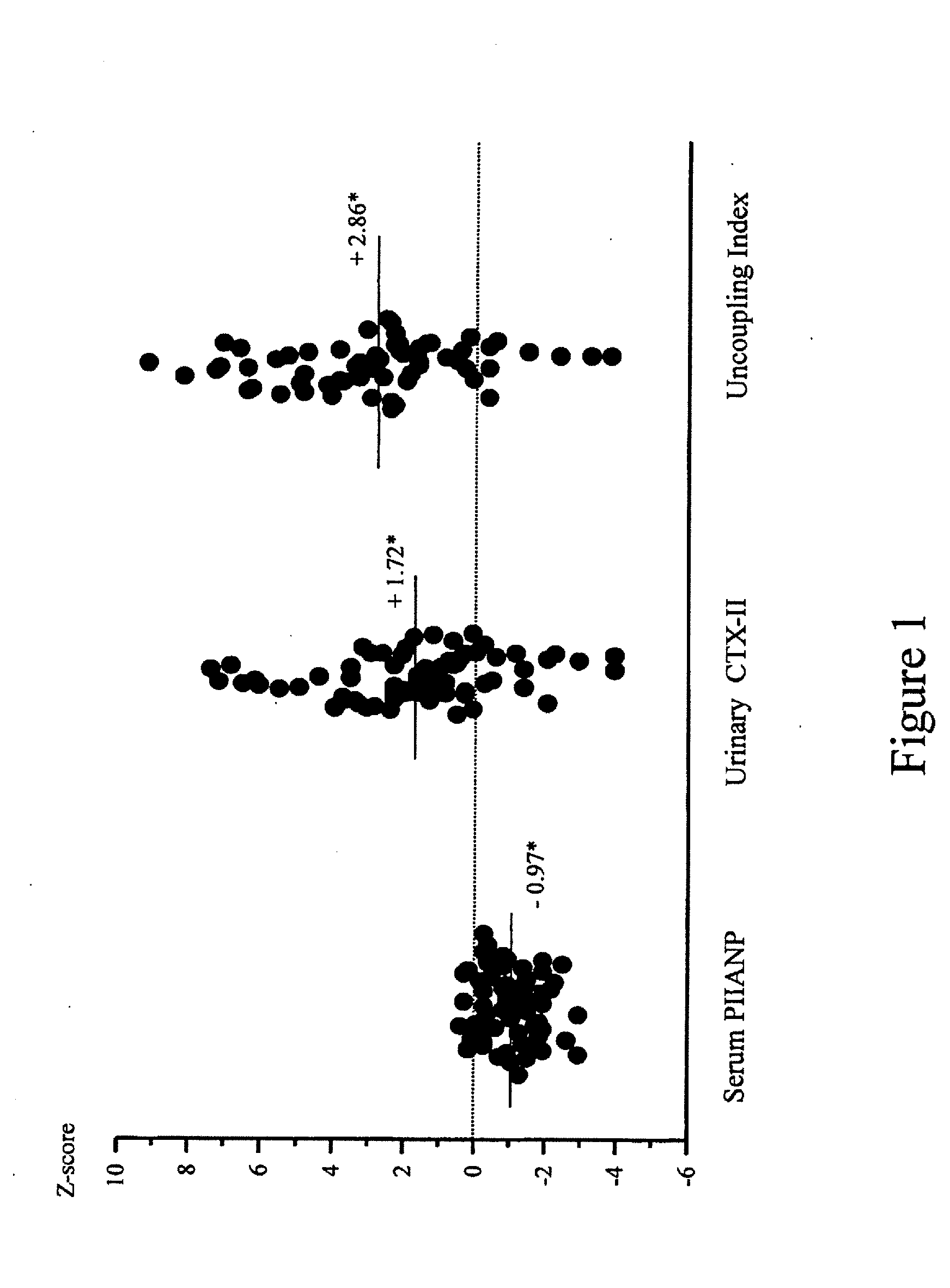Uncoupled collagen synthesis and degradation assays
- Summary
- Abstract
- Description
- Claims
- Application Information
AI Technical Summary
Benefits of technology
Problems solved by technology
Method used
Image
Examples
example
[0083] The following experimental example describing evaluation of subjects exhibiting OA symptoms is offered by way of illustration and not by way of limitation.
Patients with Knee Osteoarthritis and Healthy Controls
[0084] 75 patients (51 women, 24 men; mean age: 63.0±8.0 years) were investigated who met the American College of Rheumatology criteria for primary knee OA (Altman, R., et al., Development of criteria for the classification and reporting of osteoarthritis. Classification of osteoarthritis of the knee. Diagnostic and Therapeutic Criteria Committee of the American Rheumatism Association, Arthritis Rheum. 29:1039-49 (1986)). These patients were part of two larger randomized, multicenter, double blind studies comparing the efficacy of diacerhein and Tenidap and including respectively 61 and 665 patients (Ayral, X., et al., Abstract, Progression of knee osteoarthritis assessed by arthroscopy: a multicenter, randomized, double blind comparison of tenidap sodium versus pirox...
PUM
 Login to View More
Login to View More Abstract
Description
Claims
Application Information
 Login to View More
Login to View More - R&D Engineer
- R&D Manager
- IP Professional
- Industry Leading Data Capabilities
- Powerful AI technology
- Patent DNA Extraction
Browse by: Latest US Patents, China's latest patents, Technical Efficacy Thesaurus, Application Domain, Technology Topic, Popular Technical Reports.
© 2024 PatSnap. All rights reserved.Legal|Privacy policy|Modern Slavery Act Transparency Statement|Sitemap|About US| Contact US: help@patsnap.com










